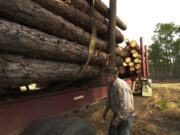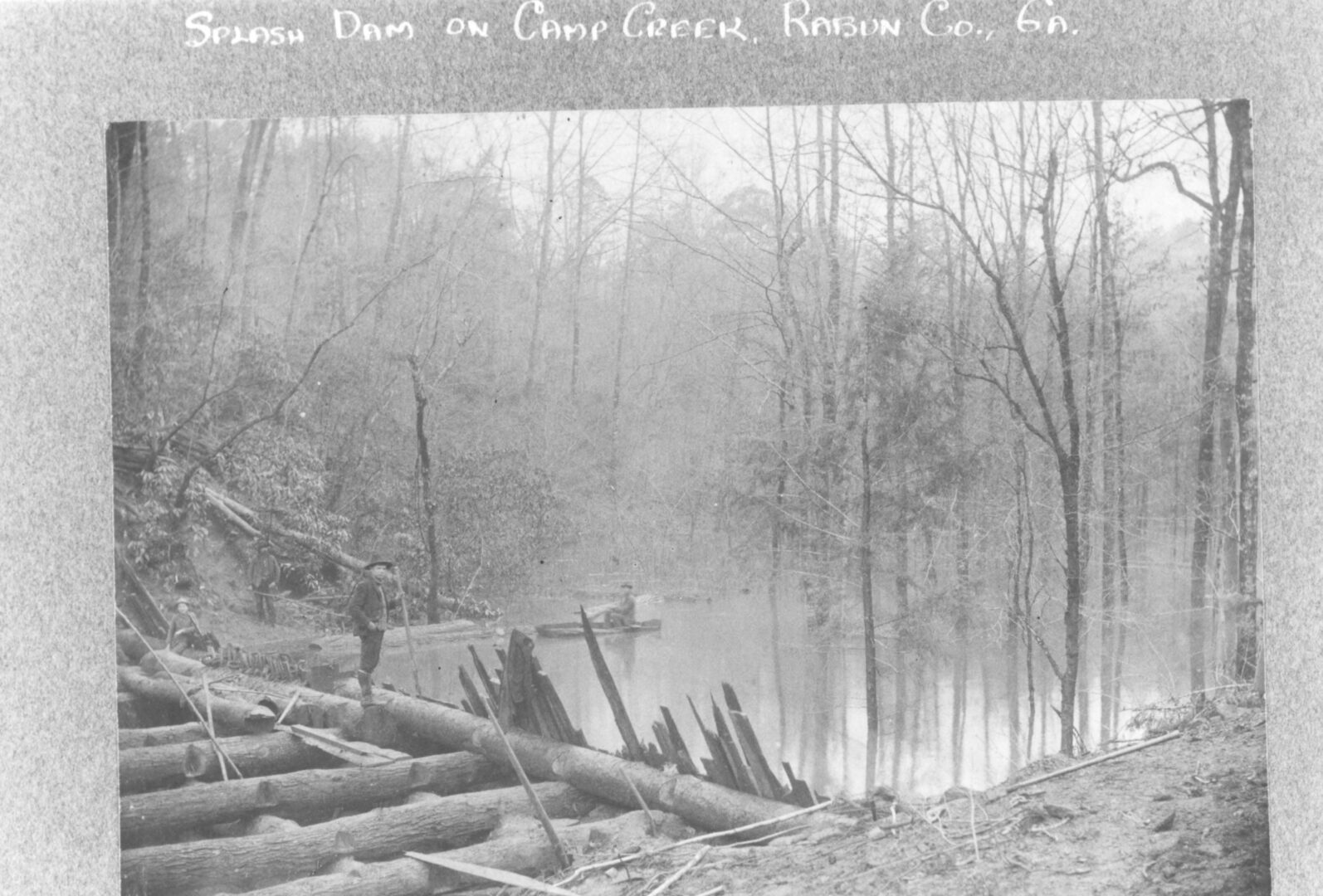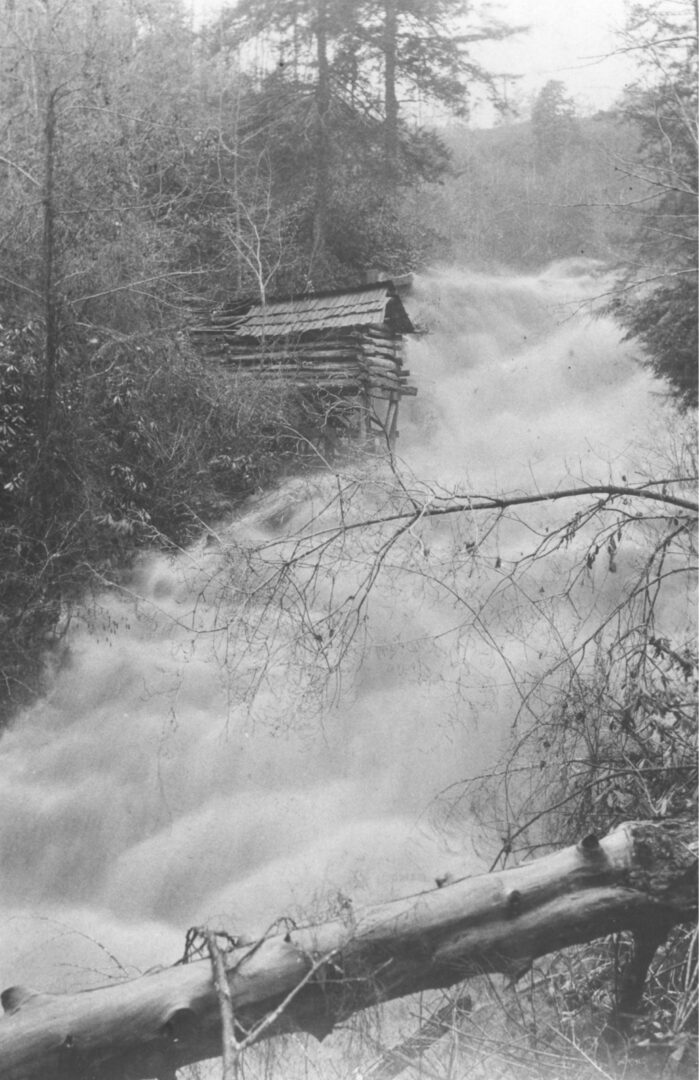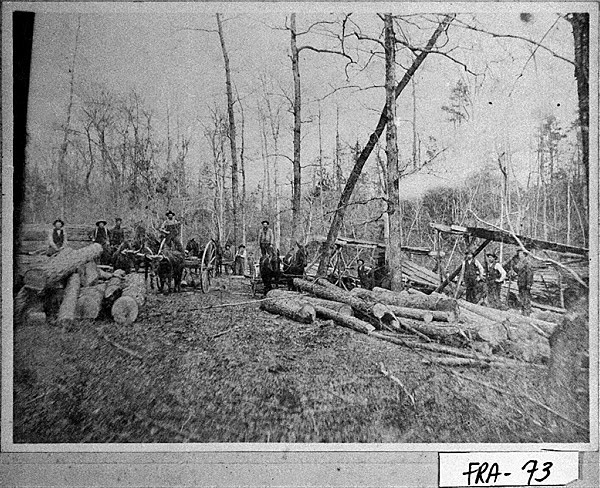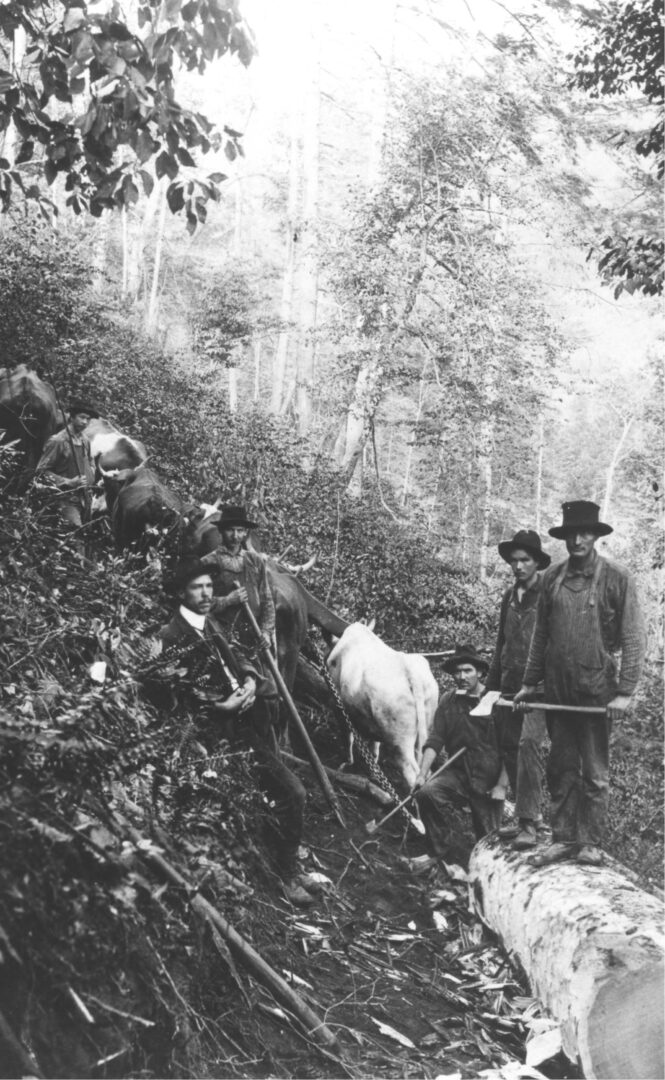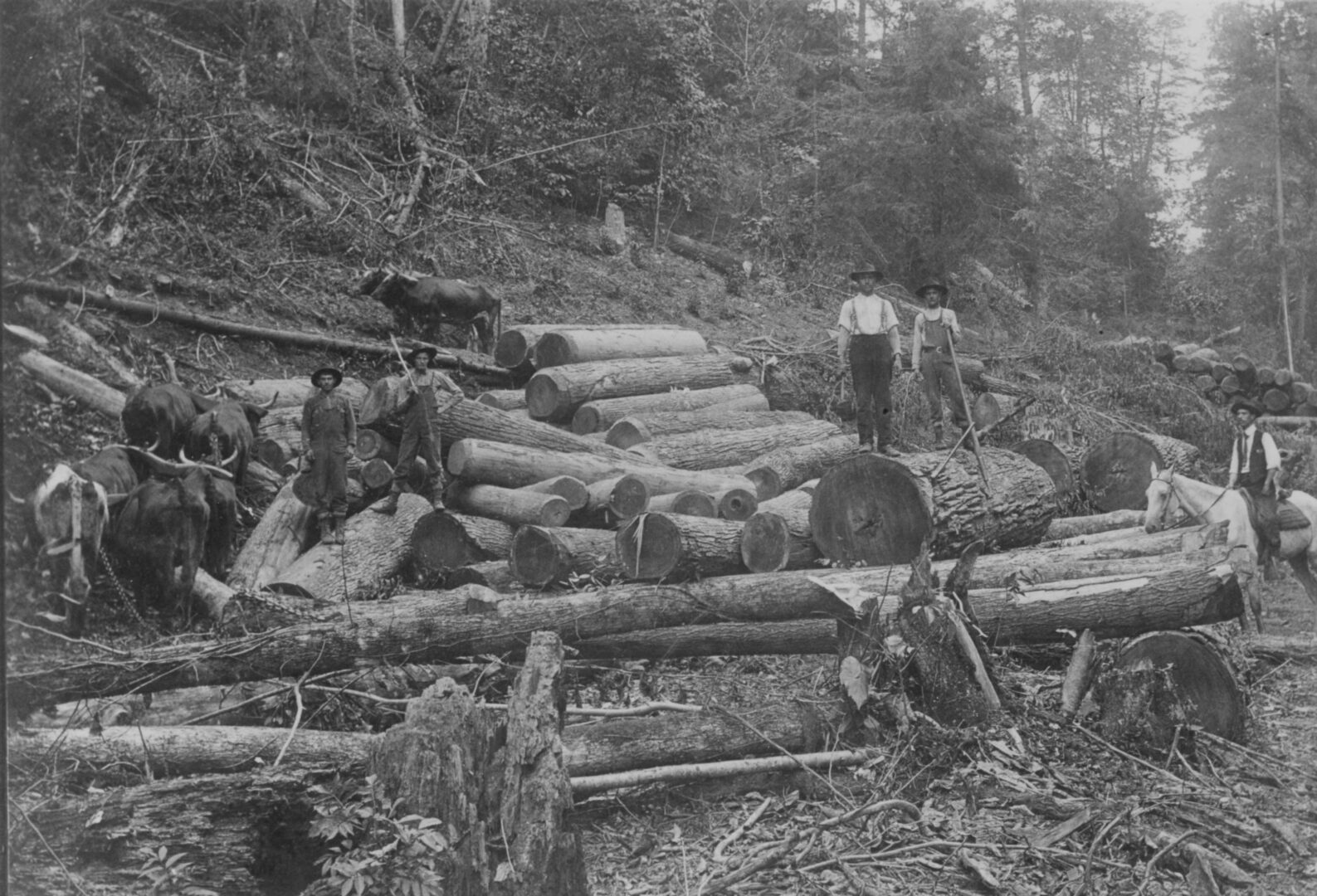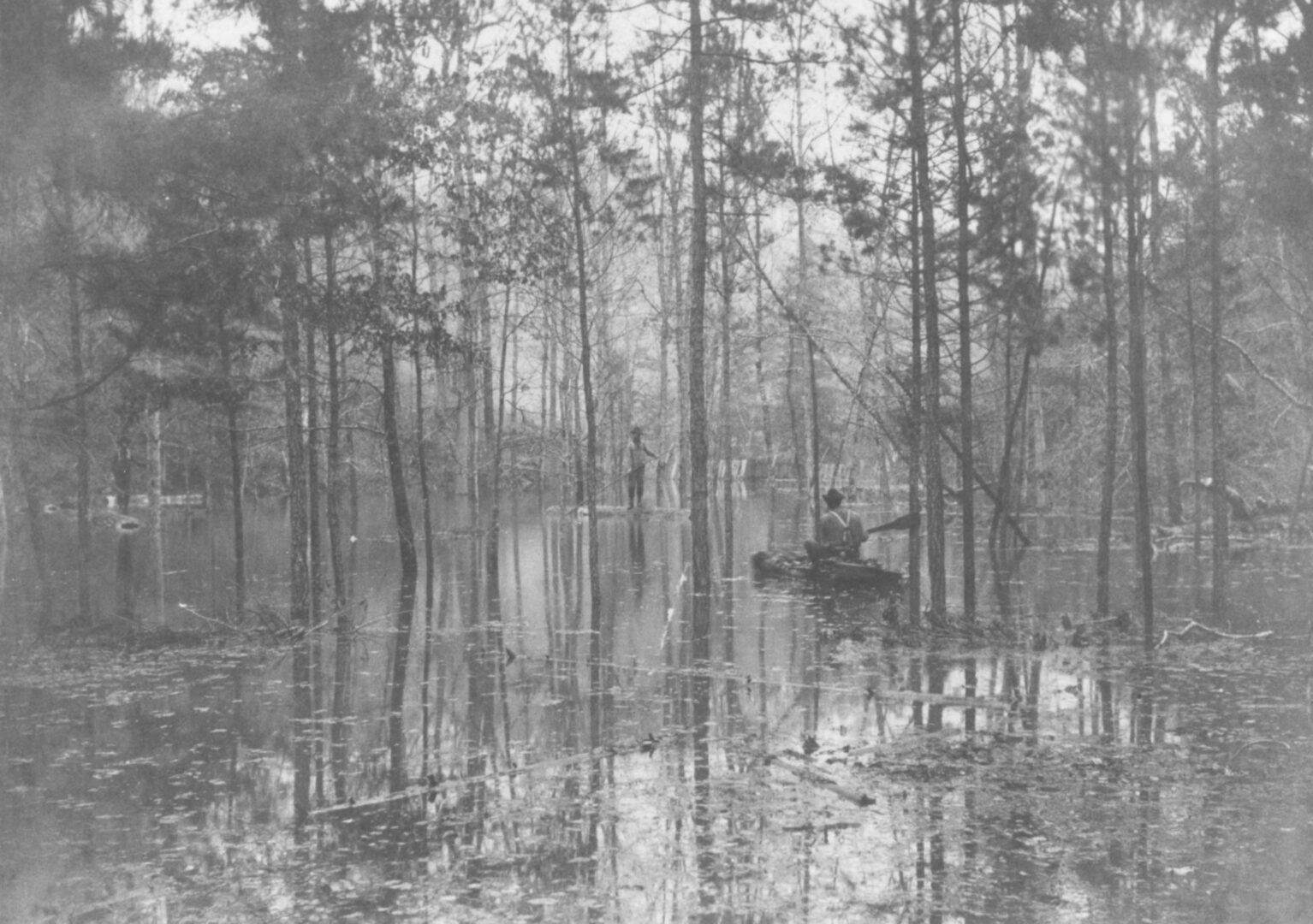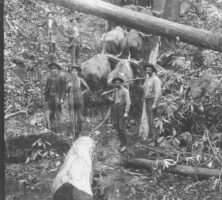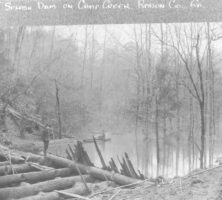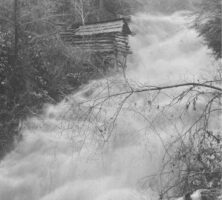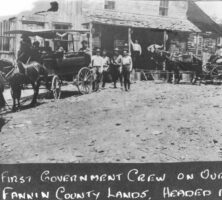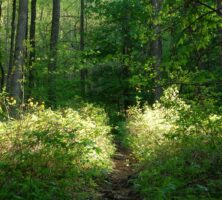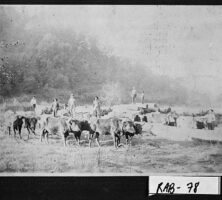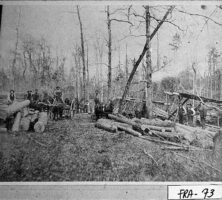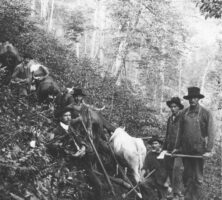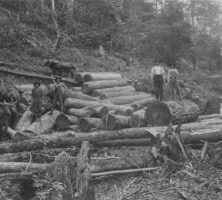Forest removal in the Georgia mountains began on a small scale with Native Americans and reached its height with large-scale industrial logging in the late nineteenth and twentieth centuries.
Preindustrial Clearing
The Mississippian Period mound builders, whose presence declined in the sixteenth century with the arrival of Hernando de Soto, cleared large swaths of mountain river valleys, such as the Etowah and Coosawattee, for agricultural and settlement purposes. They left the mountains themselves covered with old-growth forests, that is, in a basically primeval condition, subjected to little or no human interference. This forest was diverse, with such large trees as the American chestnut dominating the canopy or uppermost layer of vegetation. It remained largely in this condition until the removal of the Cherokees in the 1830s and the arrival of gold-hungry Georgians. However, with gold found in north Georgia in such small quantities, settlers turned to the abundant forests for their valuable timber and plant commodities for home consumption, and to the land itself for basic subsistence agriculture.
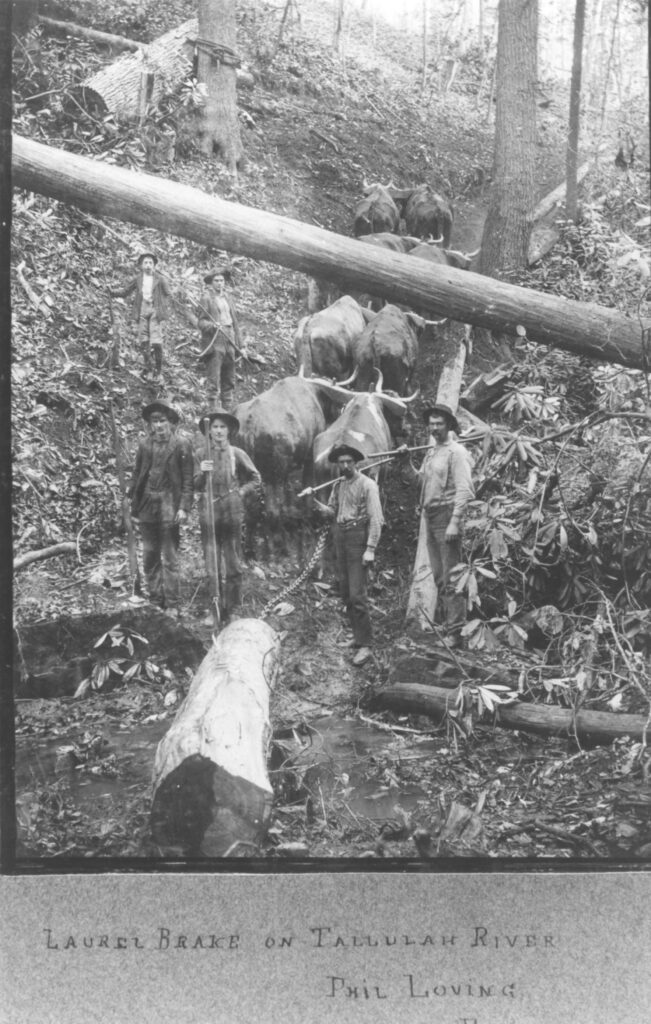
Courtesy of Mars Hill College, Appalachian Room Archives
These early settlers, whose farms were generally about half forested, logged primarily for their own uses, employing such draft animals as oxen and mules. When they did engage in commercial timbering, their logging techniques were for the most part sustainable, leaving the soil in a condition that enabled the forest to reproduce itself and thus not heavily affecting the land. The homesteaders generally practiced single-tree selection, used nonmechanized equipment, and had a knowledge of and respect for the land.
Industrial Forest Removal
Beginning around 1880, large timber companies composed primarily of northern industrialists flocked to the South to buy tens of thousands of acres at rock-bottom prices. Timber companies bought thousands of acres in north Georgia for a few dollars an acre, mainly from poor mountain farmers who had little education or experience with the cash economy of the industrialists and thus were easily taken advantage of.
The new breed of timber extractors practiced large-scale industrial logging, using heavy machinery and clear-cutting (removing all the forest cover) in large tracts. They pushed railroads into many rugged north Georgia hollows, blasting out hillsides to gain access to the more remote areas. Across once-pristine mountain streams they built splash dams, log structures that raised the water level enough to back up a large quantity of cut timber. These temporary dams were then exploded in order to wash the timber far downstream in one enormous and instant flood.
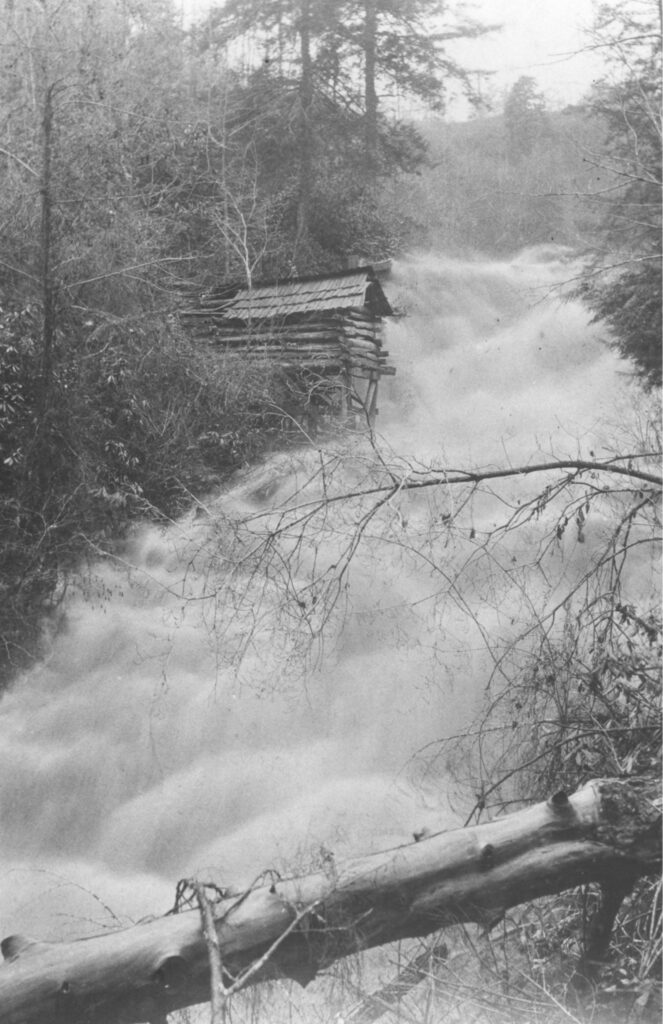
Courtesy of Mars Hill College, Appalachian Room Archives
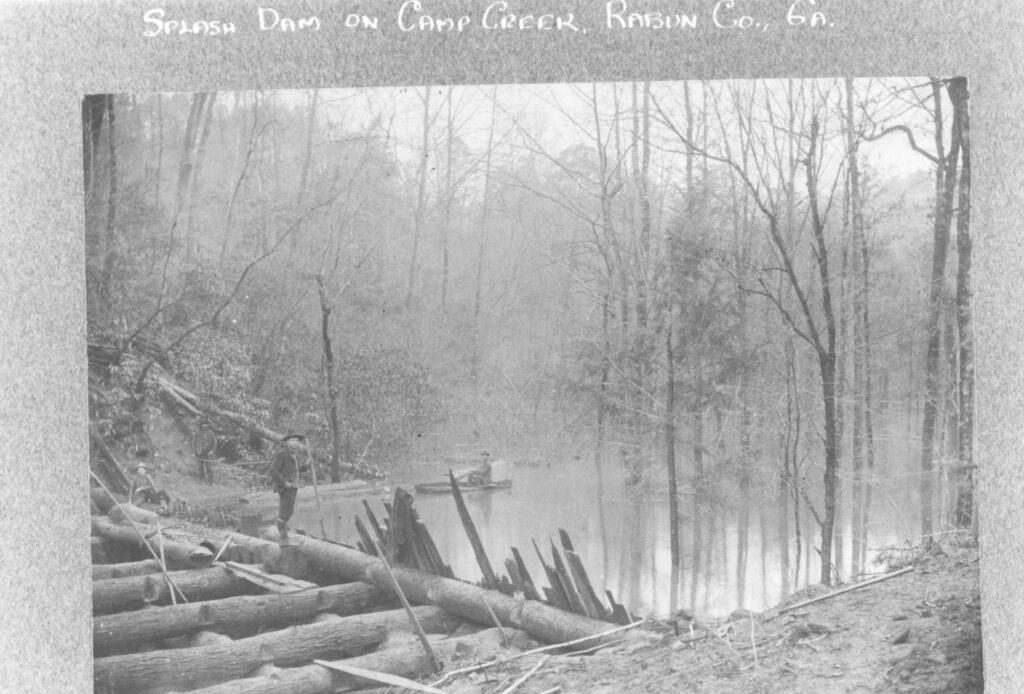
Courtesy of Mars Hill College, Appalachian Room Archives
These logging techniques, still in use today, stripped almost every mountain watershed and wreaked havoc on mountain wildlife and fisheries. Local economies, once self-sufficient, found themselves in decline; the number of lumber mills in north Georgia dropped drastically between 1909 and 1919. The economic catastrophe was accompanied by a decline in farming and mountain population.
Iron ore mining also contributed heavily to forest removal in northwest Georgia. This activity occurred primarily in the Ridge and Valley region stretching from Dalton to Rome. In the late nineteenth and early twentieth centuries, speculators, chiefly northeastern industrialists, mined coal and iron extensively in Dade and Walker counties, and logged the ridges for timber to make charcoal for smelting the iron ore. In 1924 Georgia’s state geologist declared that the stripped landscape had lost its potential, making it a prime candidate for inclusion in the emerging national forest system in the Southeast.
National Forests
The present national forest system was established under the Weeks Act of 1911, which authorized a relatively new agency, the U.S. Forest Service, to acquire land for forest reserves. Such trade groups as the National Hardwood Lumber Association and the National Lumber Manufacturers Association supported the act. The mission of the forest service grew from a commonly held belief among foresters that the United States would soon confront a “timber famine” caused by the voracious appetite of the timber industry and its irresponsible forestry practices. To create a bulwark against this coming famine, the Forest Service began purchasing seriously overcut or overfarmed land in the hope that these lands could be reforested for future timber needs.
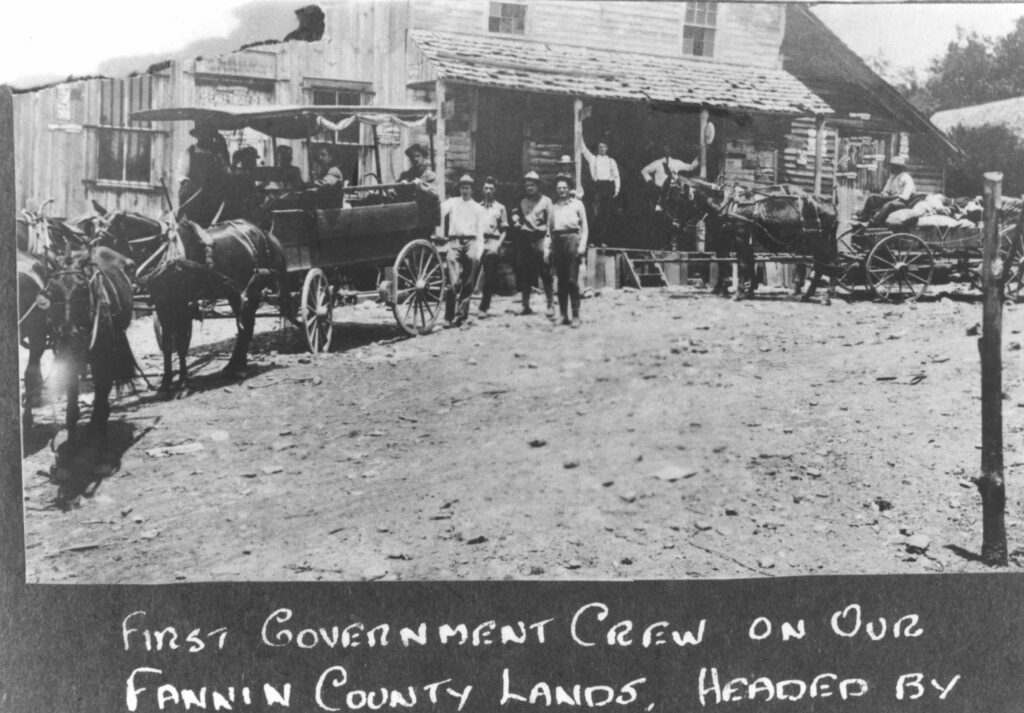
Courtesy of Mars Hill College, Appalachian Room Archives
The result of the Weeks Act for north Georgia was the Chattahoochee National Forest, formally designated in 1937 but originally part of the much larger Cherokee National Forest purchase of 1917. The forest service eventually acquired 749,000 acres in north Georgia. The majority was purchased from the timber companies, but land was also bought from local owners, usually at prices comparable to those the timber companies had paid earlier—a few dollars an acre on average. Though mountain residents willingly sold their land, dramatic rises in land values and the removal of so much acreage from local tax bases fostered resentment in the coming years.
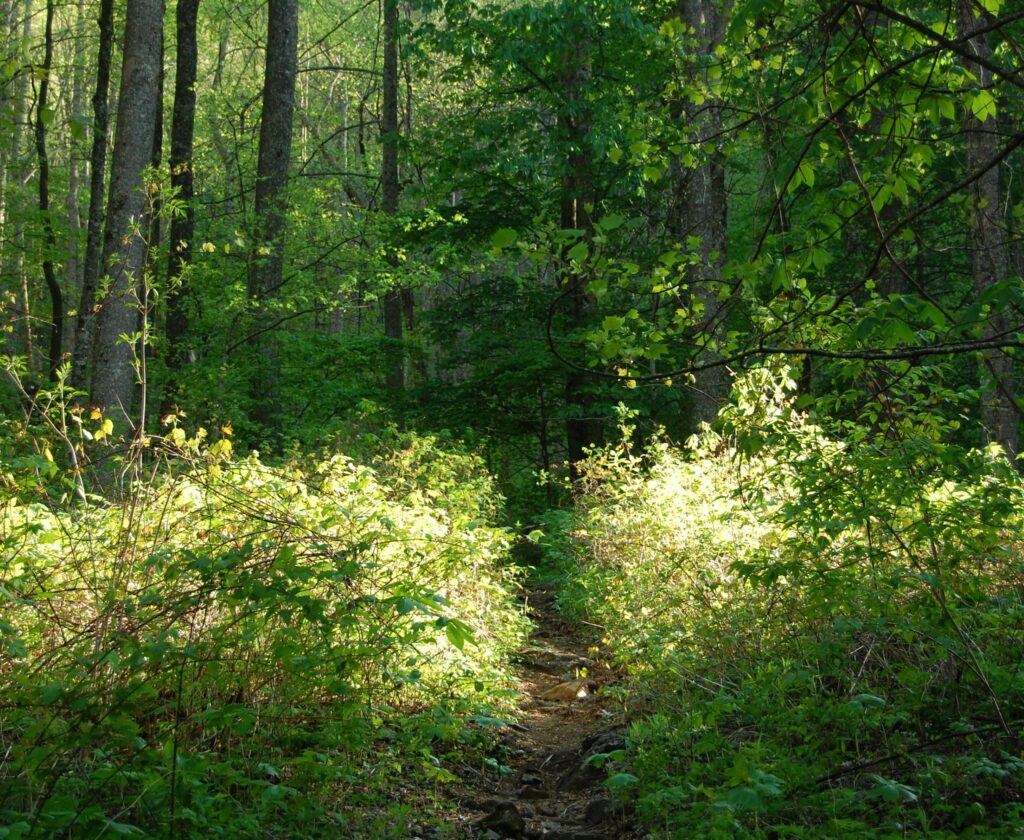
Image from JR P
The forest service also began to draw criticism from the public over its timbering practices. Originally created to be a model of stewardship, the forest service shifted in the 1950s to many of the timbering practices it had originally opposed, including clear-cutting. It also logged almost all remaining old-growth forest in north Georgia. As much as one-third of the forest land in north Georgia, it has been estimated, was virgin timber when the forest service acquired it. At the beginning of the twenty-first century virgin stands probably cover less than 2 percent of the Chattahoochee National Forest.
Private land around the national forest also experienced a high degree of forest removal in the last few decades of the twentieth century. North Georgia lost almost 100,000 acres of forest land to development from 1990 to 2000, and the trend is expected to continue as Atlanta sprawls northward. The Chattahoochee National Forest, once considered a primary source of forest products in the mountains, is now valued most highly for the tourism dollars it brings to local communities, its recreational opportunities, and for the clean water it provides to millions of downstream residents.


